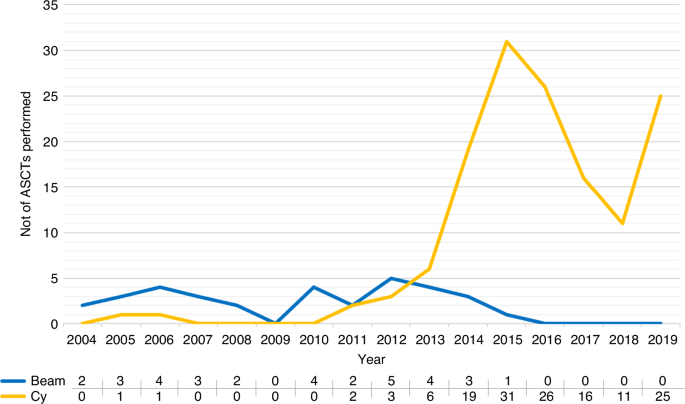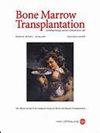BEAM or cyclophosphamide in autologous haematopoietic stem cell transplantation for relapsing-remitting multiple sclerosis
IF 4.5
2区 医学
Q1 HEMATOLOGY
引用次数: 0
Abstract
The most widely used conditioning regimens in autologous haematopoietic stem cell transplantation (ASCT) for multiple sclerosis (MS) are BEAM with anti-thymocyte globulin (ATG) and high-dose cyclophosphamide with ATG (Cy/ATG). In this retrospective study, we compare efficacy and safety of these regimens when used for relapsing-remitting MS. We assessed 231 patients treated in Sweden before January 1, 2020. The final cohort comprised 33 patients treated with BEAM/ATG and 141 with Cy/ATG. Prospectively collected data from the Swedish MS registry were used for efficacy, and electronic health records for procedure-related safety. The Kaplan–Meier estimate of ‘no evidence of disease activity’ (NEDA) at 5 years was 81% (CI 68–96%) with BEAM/ATG and 71% (CI 63–80%) with Cy/ATG, p = 0.29. Severe adverse events were more common with BEAM/ATG, mean 3.1 vs 1.4 per patient, p = <0.001. Febrile neutropaenia occurred in 88% of BEAM/ATG patients and 68% of Cy/ATG patients, p = 0.023. Average hospitalisation was 3.0 days longer in BEAM/ATG patients from day of stem-cell infusion, p < 0.001. While both regimens showed similar efficacy, BEAM/ATG was associated with more severe adverse events and prolonged hospitalisation. In the absence of randomised controlled trials, Cy/ATG may be preferable for ASCT in patients with relapsing-remitting MS due to its favourable safety profile.


在治疗复发缓解型多发性硬化症的自体造血干细胞移植中使用 BEAM 或环磷酰胺。
自体造血干细胞移植(ASCT)治疗多发性硬化症(MS)最广泛使用的调理方案是BEAM联合抗胸腺细胞球蛋白(ATG)和大剂量环磷酰胺联合ATG(Cy/ATG)。在这项回顾性研究中,我们比较了这些治疗方案用于复发性缓解型多发性硬化症的疗效和安全性。我们对2020年1月1日前在瑞典接受治疗的231名患者进行了评估。最终队列包括 33 名接受 BEAM/ATG 治疗的患者和 141 名接受 Cy/ATG 治疗的患者。瑞典多发性硬化症登记处前瞻性收集的数据用于评估疗效,电子健康记录用于评估与手术相关的安全性。5年后 "无疾病活动证据"(NEDA)的Kaplan-Meier估计值为:BEAM/ATG为81%(CI 68-96%),Cy/ATG为71%(CI 63-80%),P = 0.29。BEAM/ATG的严重不良事件更常见,平均每名患者3.1起,Cy/ATG为1.4起,P = 0.29。
本文章由计算机程序翻译,如有差异,请以英文原文为准。
求助全文
约1分钟内获得全文
求助全文
来源期刊

Bone Marrow Transplantation
医学-免疫学
CiteScore
8.40
自引率
8.30%
发文量
337
审稿时长
6 months
期刊介绍:
Bone Marrow Transplantation publishes high quality, peer reviewed original research that addresses all aspects of basic biology and clinical use of haemopoietic stem cell transplantation.
The broad scope of the journal thus encompasses topics such as stem cell biology, e.g., kinetics and cytokine control, transplantation immunology e.g., HLA and matching techniques, translational research, and clinical results of specific transplant protocols. Bone Marrow Transplantation publishes 24 issues a year.
 求助内容:
求助内容: 应助结果提醒方式:
应助结果提醒方式:


